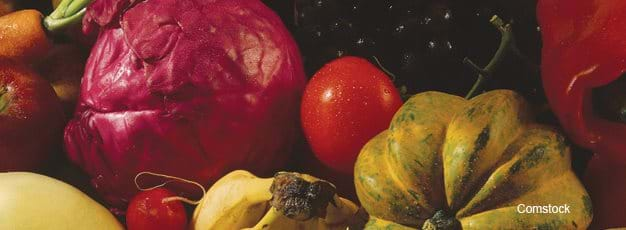Fruit and Vegetables in the Limelight

Several hot issues—immigration reform, diet quality and rising rates of obesity, and U.S. agricultural trade—and how they play out may have significant effects on the fruit and vegetable industries. The industries are a key cog in U.S. agriculture, accounting for nearly a third of U.S. crop cash receipts and a fifth of U.S. agricultural exports in 2002-04. With increasing evidence of the nutritional benefits from consuming fruit and vegetables, the produce industry is also recognized as being pivotal to the health and well-being of consumers.
Fruit and vegetable growers are closely following the current debate on immigration reform. They are particularly concerned about the effects of any new legislation on labor availability. According to the U.S. Department of Labor’s latest (2001/02) National Agricultural Workers Survey, fruit, tree nut, and vegetable farms accounted for two-thirds of all hired crop workers in the United States. With an undefined but sizable portion of this labor derived from foreign laborers, the stakes are high for fruit and vegetable growers, who must have enough labor at critical planting and harvesting times. Fruit and vegetable production tends to be more labor intensive than other agricultural industries because such operations as thinning, cultivating, irrigating, and harvesting require skilled labor to avoid damage to tender plants, bushes, and trees and to ensure the quality and appearance of fresh-market products.
Growing public concern about the quality of American diets is also drawing attention to the fruit and vegetable industry. In their campaign to reduce the rates of heart disease, cancer, and, especially, obesity, public and private sector nutritionists are increasingly emphasizing the need for Americans to increase their consumption of fruit and vegetables. The average American does not consume the recommended 5-10 servings of fruit and vegetables each day, as suggested by the 2005 Dietary Guidelines for Americans established by USDA. For Americans to meet these recommendations, fruit consumption would have to more than double and vegetable use would have to rise by more than a fourth, presenting opportunities for U.S. growers.
Consumer demand for greater variety and more healthful choices in food has helped fuel a rise in U.S. imports of fruit, vegetables, and tree nuts. In recent years, imports have been increasingly outpacing exports. While some imports directly compete with domestically produced fruit and vegetables, others complement domestic production and provide greater opportunities for Americans to meet the amounts recommended for daily consumption. For example, during the winter, tomatoes from Mexico compete with Florida-grown tomatoes; however, winter grapes from Chile provide a 12-month supply of fresh grapes in the market, complementing California’s late spring and summer production. Other imports, such as tropical fruit, expand consumer choices.
Fruit and Vegetable Backgrounder, by Gary Lucier, Susan Pollack, Mir Ali, and Agnes Perez, USDA, Economic Research Service, April 2006
Fruit and Tree Nuts, by Catharine Weber, Helen Wakefield, and Seth J. Wechsler, USDA, Economic Research Service, June 2024
Vegetables and Pulses, by Wilma V. Davis, Catharine Weber, and Seth J. Wechsler, USDA, Economic Research Service, March 2024
Farm Labor, by Marcelo Castillo and Skyler Simnitt, USDA, Economic Research Service, August 2023

